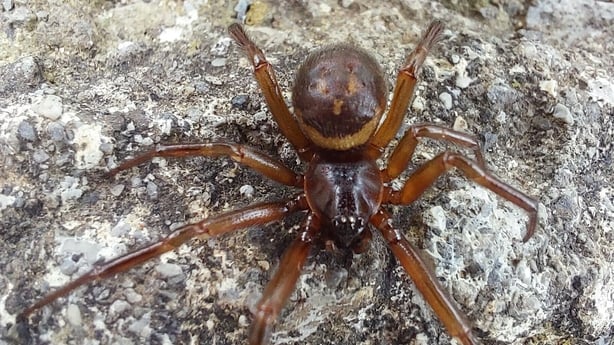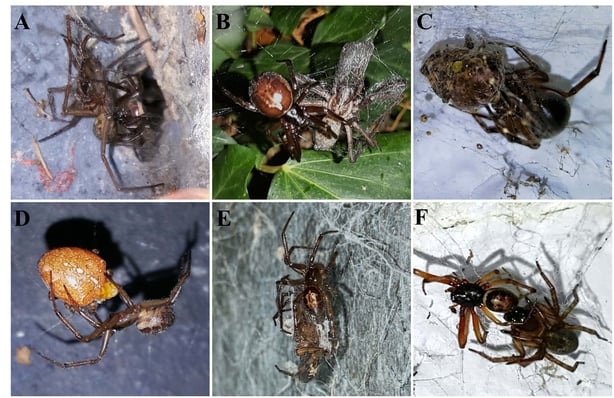A Cork mother has called for greater public awareness of the False Widow spider after her 15-week-old son was bitten multiple times.
It comes as a new study found venom from the Noble False Widow - an invasive species - is 230 times more potent than species native to Ireland.
Baby Charlie was bitten last Monday at his home in Shanagarry, his mother Sarah-Jane Dennehy said.

Mother and baby were left traumatised from the incident.
"So Charlie was playing on his mat and then he was the colour purple as he screamed hysterically like I'd never heard him before," Ms Dennehy said.
"I took off his trousers and saw that his left leg, from his knee to his ankle, was bright red and he had three big welts. Then I stripped off his top and as I did so a big Noble False Widow crawled out from behind his ear."

Sarah-Jane captured the spider and brought it to the GP.
Charlie was examined and prescribed painkillers but the pain didn't subside and he was taken to the emergency department. There, he was given more painkillers and the effects of the venom wore off after about 11 hours.
"It was really harrowing experience for Charlie and myself. I hope nobody else goes through this. Although Charlie received great medical care from his GP and the hospital, the guidelines just aren't there to deal with False Widow bites at the moment," she said.

The Noble False Widow is known for the ability to cause a range of mild to severe symptoms in people who are bitten, but little is known about its ecological impact on native species, according to the researchers on a new study.
Researchers at the NUI Galway's Ryan Institute were investigating why the spider has been so successful at spreading in towns and cities around the world.
We need your consent to load this rte-player contentWe use rte-player to manage extra content that can set cookies on your device and collect data about your activity. Please review their details and accept them to load the content.Manage Preferences
They chose to study the potency of the venom as well as the spider's attack patterns.
"Overall, the Noble False Widow spider killed and ate 95% of its opponents over the course of the study," researchers said.
Noble False Widows can tackle a range of organisms much larger than themselves, including lizards, bats, shrews, and other spiders.
Scientists said the spider is also able to adapt its attacking behaviour depending on different battle situations and make "calculated decisions" on whether to attack prey of different sizes depending on how much venom it has left.
"If little venom is available, they avoid facing large opponents that could injure them, and instead focus on small prey," it said.

A senior co-author of the study described the Noble False Widow as a "truly remarkable animal" that has surprised researchers at every turn with its ability to dominate habitats it occupies.
"The tiniest amounts of venom - about 1,000th of a raindrop - can cause medically significant symptoms in humans that are about 250,000 times larger than them," Dr John Dunbar said.
Originating from Madeira and the Canary Islands, the Noble False Widow spider Steatoda nobilis has the potential to become one of the world’s most invasive species of spider.
It was first reported in southern England in 1879 and in recent decades has increased its range and population density, spreading northwards towards Scotland and westward through Wales and Ireland.
In that time the species has also spread globally across Europe, East Asia, North America, and South America.







